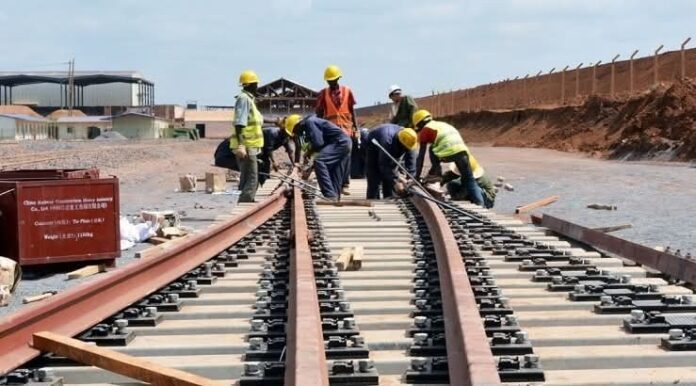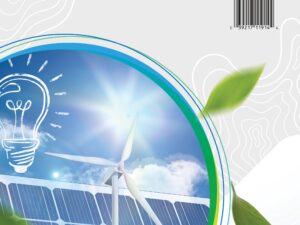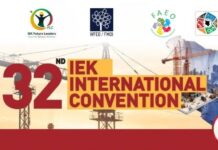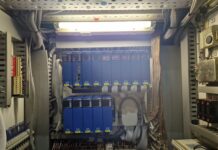Last Updated 3 months ago by Kenya Engineer
Kenya and Uganda are moving forward decisively with their respective Standard Gauge Railway (SGR) extensions—each aimed at transforming regional trade, reducing logistics costs, and enhancing connectivity. The ambitious corridor stretching from the Kenyan port of Mombasa through Naivasha, Kisumu, Malaba to Kampala is fast becoming more than just a vision—it’s taking shape.
Project Overview & Route
- Kenya side: The plan is to extend the SGR from Naivasha through Kisumu to Malaba at the Kenya-Uganda border. This involves the construction of the Phase 2B (Naivasha-Kisumu) and Phase 2C (Kisumu-Malaba) sections. The combined length is approximately 475 kilometres.
- Uganda side: The corresponding section is the Malaba–Kampala line, about 272 km long. It will link Uganda’s capital to Kenya’s border rail network and ultimately to the Port of Mombasa.
Project Costs & Financing
- Uganda’s Malaba–Kampala Section
‣ Total value: approximately US$2.7 billion (≈ €2.7 billion) for the 272 km stretch.
‣ Financing structure: 85% debt financing, with 15% coming from the Ugandan government.
‣ Debt portion breakdown:
• Approx. 60% from Export Credit Agencies (ECAs), via low-interest loans.
• Approx. 25% from Development Finance Institutions (DFIs)—entities such as the African Development Bank, Islamic Development Bank, and the OPEC Fund for Development.
‣ Government of Uganda’s commitment: 15%, including an early disbursement of €75 million for preliminary works. - Kenya’s Naivasha – Kisumu – Malaba Line
‣ Estimated cost: Kenya had signaled KSh 648 billion for the extension covering Naivasha–Kisumu–Malaba.
‣ Kenya is also exploring funding commitments from export-import banks—most notably from China’s Exim Bank—and considering syndicated loans and possibly partnerships to share risk.
‣ In 2024 the government said it would fund part of the project via internal revenue, e.g. the Railway Development Fund. - Loan vs Grant
All of these major infrastructure financing arrangements appear to be loans / debt financing, not free grants. Kenya’s extension and Uganda’s Malaba–Kampala both rely heavily on borrowing from ECAs, DFIs and other financiers. - Repayment Terms
Detailed repayment terms (interest rates, grace period, amortization schedule) are not fully published in public sources as of yet. What is clear:
• The Ugandan government did due diligence to secure “low-interest” ECA and DFI backing.
• Uganda expects to complete construction in about 48 months once works begin.
Contractors, Start Dates & Preparatory Works
- Contractors
‣ For Uganda’s Malaba–Kampala section: Turkish firm Yapi Merkezi is the EPC (Engineering, Procurement & Construction) contractor.
‣ For Kenya’s extension: The contractor for Naivasha–Kisumu–Malaba has been identified in past tenders as China Communications Construction Company (CCCC) (or its subsidiaries) for certain segments, especially Naivasha–Kisumu and Kisumu–Malaba. - Commencement Dates & Project Phases
‣ Uganda: Construction was expected to start in November 2024 for the Malaba–Kampala section, once financing and EPC documents were finalized.
‣ Kenya: For the Naivasha–Kisumu–Malaba stretch, work is slated to begin in 2025 (Phase 2B & 2C), pending funding, surveys, resettlements, and other preparatory work.
Anticipated Impacts & Benefits
This corridor, once fully operational, is expected to deliver multiple economic, social, and environmental benefits:
- Reduced logistics costs for landlocked Uganda and western Kenya; faster cargo movement; reduction of road maintenance costs and wear.
- Increased trade volumes through more efficient access to the Port of Mombasa, attracting more export/import business.
- Boost to local industry and suppliers: both governments are promising local content. Uganda aims for about 40% of contracts to go to local suppliers/contractors.
- Job creation during construction and operation phases.
- Regional integration: better connectivity will enhance relationships across East Africa—economically, socially, and politically.
- Environmental advantages: shifting freight from road to rail has the potential to lower carbon emissions, reduce traffic congestion, and cut down on road accidents.
Challenges & Considerations
- Funding gaps and financing risk: Kenya still needs to secure full financing for its extension sections. Delays in funding can push back timelines.
- Land acquisition & resettlement issues: As with many large infrastructure projects, acquiring land and compensating displaced persons is sensitive and takes time.
- Technical and contractor capacity: Both governments must ensure that contractors are able to deliver on schedule, with quality. Uganda’s earlier contract with China Harbour (CHEC) was terminated due to delays.
- Debt sustainability: Heavy reliance on loan financing means that repayment burdens and fiscal pressures must be managed carefully.
- Coordination between Kenya & Uganda, both in terms of technical standards, customs and cross-border policy, and aligning construction schedules so the network is functional end-to-end.
What to Watch Going Forward
- Finalization of loan agreements: interest rates, grace periods, repayment schedules, duration.
- Progress in land acquisition, environmental and social impact assessments, and resettlement for Kenya’s extension.
- How much local content is actually achieved, especially industries in western Kenya and local contractors in Uganda.
- Monitoring of interim works—design, surveying, procurement, preparatory works—as these affect start times.
- Synergies with the broader East African Railway Master Plan: how the corridor will connect onward to Rwanda, DRC, South Sudan, and how cross-border integration works in practice.
Conclusion
The SGR corridor from Mombasa through Naivasha, Kisumu, Malaba to Kampala stands to be a transformative infrastructure backbone for East Africa, enabling smoother trade, lower costs, and stronger regional integration. While the financing is large and the challenges real, recent contracts and financial close indicators show the corridor is transitioning from planning into execution. If Kenya and Uganda manage the implementation well—on finance, contracting, local content, and coordination—this corridor is likely to reshape trade flows and spark wider economic development in the region.
























